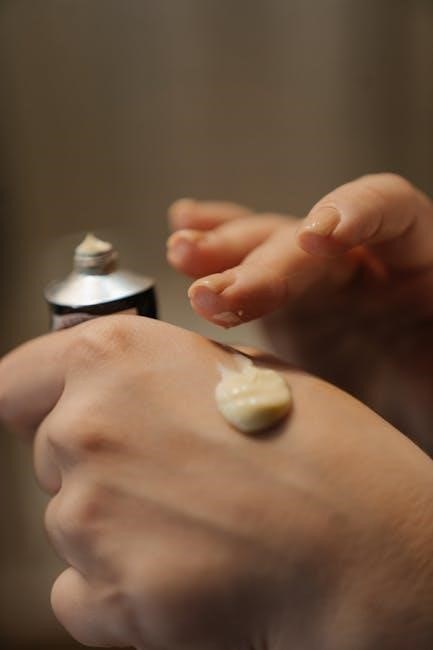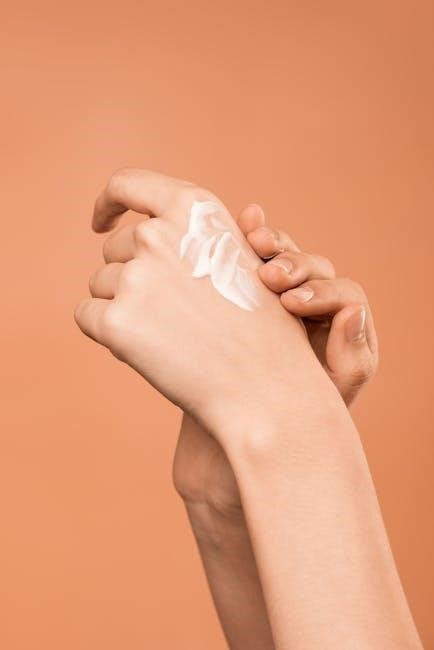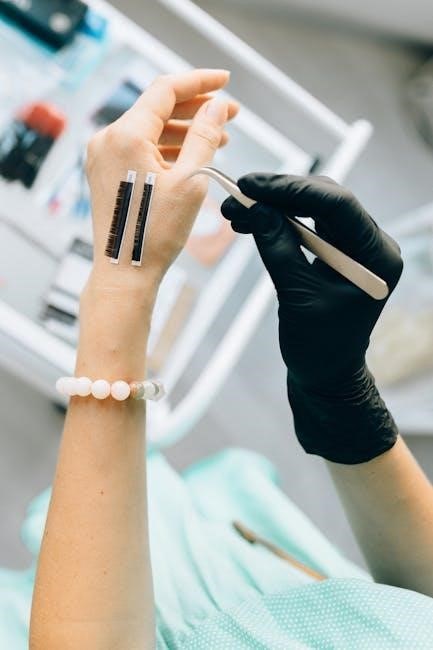Decal application is a precise process that enhances surfaces with vibrant designs and durability. Proper techniques ensure smooth adhesion, preventing peeling or bubbling. Decals offer a creative way to personalize vehicles, windows, or walls, requiring clean surfaces and the right tools for professional results. Both wet and dry methods are effective, with squeegees ensuring even adhesion. Following step-by-step instructions guarantees a flawless finish, making decal application a rewarding DIY project for beginners and experts alike.
Importance of Proper Decal Application
Proper decal application is essential for achieving a professional, long-lasting result. A well-applied decal ensures vibrant colors, sharp details, and durability. Improper techniques can lead to peeling, bubbling, or misalignment, which can ruin the decal’s appearance. Clean surfaces, precise alignment, and the right tools are critical for success. Taking the time to prepare and apply the decal correctly ensures it adheres smoothly and withstands environmental factors like weather or wear. A properly applied decal not only enhances aesthetics but also maintains its integrity for years, making it worth the extra effort for a polished finish. Proper application guarantees a professional look and lasting durability.
Overview of the Decal Application Process
The decal application process involves several key steps to ensure a successful outcome. It begins with surface preparation, including cleaning and drying to ensure proper adhesion. Next, the decal is prepared by cutting it to size and applying transfer tape. The decal is then positioned on the surface, often with the help of alignment tools or markings. Once in place, the backing paper is removed, and the decal is pressed onto the surface using a squeegee or similar tool to eliminate bubbles. Finally, the transfer tape is peeled away, leaving the decal securely in place. Proper technique and patience are essential for a professional finish, ensuring the decal adheres smoothly and lasts for years.

Tools and Materials Needed
The essential tools include a squeegee, transfer tape, masking tape, and a craft cutter. Materials needed are decals, application solution, and a clean, dry surface.
Essential Tools for Decal Application
Having the right tools ensures a smooth and professional decal application; A squeegee is crucial for pressing the decal onto the surface, removing air bubbles, and ensuring even adhesion. Transfer tape is necessary for transferring the decal from its backing to the target surface without stretching or distorting it. Masking tape helps secure the decal in place during application, preventing movement. A craft cutter or sharp utility knife is needed to cut the decal to the desired size. Additionally, a lint-free cloth and microfiber cloth are essential for cleaning and drying the surface. Optional tools include compressed air for dust removal and a ruler for precise alignment. These tools collectively ensure a flawless decal application process.
Recommended Materials for Optimal Results
Using high-quality materials is vital for a successful decal application. High-quality vinyl decals ensure vibrant colors and durability. Application fluid, such as a soapy water solution, helps prevent air bubbles and allows for easy adjustment. Transfer tape is essential for securely transferring the decal to the surface without stretching. A lint-free cloth or microfiber cloth is recommended for cleaning and drying the surface. For smooth adhesion, a squeegee or credit card is ideal for pressing the decal firmly. Optional materials include primer for uneven surfaces to enhance adhesion. Using these materials ensures a professional finish and long-lasting results, making your decal application process efficient and effective.

Surface Preparation
Proper surface preparation is key to successful decal application. Clean the area with mild soap and water, ensuring it’s free of dirt, oils, and moisture. Dry thoroughly with a lint-free cloth to eliminate dust and bubbles, ensuring a smooth, even base for optimal adhesion and a professional finish.
Cleaning the Application Surface
Cleaning the application surface is a critical step in ensuring proper decal adhesion. Use mild soap and water to remove dirt, oils, or waxes. Avoid harsh chemicals that might damage the material. Gently scrub the area with a soft cloth or sponge, then rinse thoroughly with clean water. Dry the surface with a lint-free cloth or let it air dry to prevent moisture residue. A clean, dry surface ensures the decal adheres smoothly and prevents bubbles or peeling. For best results, inspect the surface and repeat cleaning if necessary. Proper cleaning is the foundation for a successful and long-lasting decal application, guaranteeing a professional finish.
Drying and Ensuring a Dust-Free Surface
Drying and ensuring a dust-free surface is essential for proper decal adhesion. After cleaning, use a lint-free cloth or allow the surface to air dry to remove any moisture. Inspect the area for dust particles, as these can interfere with the decal’s adherence. If necessary, lightly wipe the surface with a microfiber cloth or use compressed air to remove particles without touching the area. For delicate surfaces, a soft brush or gentle airflow can be effective. Ensuring the surface is completely dry and dust-free guarantees a smooth, bubble-free application and long-lasting results. A clean, dry surface is the foundation for a professional and durable decal finish.
Smoothing the Application Surface
Smoothing the application surface is crucial for optimal decal adhesion. Use a squeegee or credit card to gently remove air bubbles or wrinkles. For uneven surfaces, apply light pressure in a circular motion to create a flat base. Minor imperfections, such as small scratches, can be smoothed with fine-grit sandpaper. Ensure the surface is even and free of bumps, as this ensures the decal adheres uniformly. A smooth surface prevents lifting or bubbling, resulting in a professional finish. Proper smoothing guarantees better contact between the decal and the material, enhancing both appearance and durability. This step is vital for achieving a flawless, long-lasting decal application.

Decal Preparation
Properly preparing your decal ensures a smooth application. Cut the decal to size, prepare the transfer tape, and align it accurately for a professional finish.
Cutting the Decal to Size
Cutting the decal to size is the first step in preparation. Use sharp tools or a craft cutter for clean edges. Measure carefully to match the intended surface. Smooth cuts prevent fraying and ensure proper adhesion. For intricate designs, consider layering or sectioning the decal for easier handling. Always cut on a flat, stable surface to maintain accuracy. Proper sizing guarantees the decal fits seamlessly, enhancing both appearance and durability. This step sets the foundation for a successful application, ensuring the decal aligns perfectly and adheres smoothly to the surface.
Preparing and Applying Transfer Tape
Preparing the transfer tape is crucial for a smooth decal application. Cut a piece of transfer tape slightly larger than the decal. Place it over the decal, aligning the edges carefully. Use a squeegee or credit card to press the tape firmly onto the decal, ensuring even adhesion. This step prevents wrinkles and bubbles during application. Properly prepared transfer tape guarantees the decal transfers cleanly to the surface. Make sure the tape is free of air pockets for optimal results. Once applied, the transfer tape acts as a carrier, allowing precise placement of the decal on the desired surface without stretching or distorting it.

Application Methods
Decal application can be done using wet or dry methods. The wet method uses a soapy solution for easier positioning and bubble prevention, while the dry method provides quick adhesion with less risk of moisture issues.
Wet Application Method
The wet application method involves applying a soapy water solution to the surface before placing the decal. This allows for easy adjustment and minimizes air bubbles. Start by spraying the solution evenly, then peel the decal from its backing. Position the decal carefully, ensuring alignment with your markings. Use a squeegee to press the decal firmly, working from the center outward to eliminate any trapped air. The solution prevents immediate adhesion, giving you time to adjust the decal for perfect placement. Once satisfied, allow the decal to dry completely for a strong, long-lasting bond. This method is ideal for large or intricate designs.
Dry Application Method
The dry application method is a straightforward process ideal for small to medium-sized decals. Begin by peeling the decal from its backing and aligning it with your surface. Use a squeegee or credit card to press the decal firmly, starting from the center and working outward to ensure full adhesion. This method eliminates the risk of air bubbles caused by excess moisture, providing a quick and precise application. However, it requires careful alignment since adjustments are harder once the decal is applied. Ensure the surface is clean and dry for optimal results. The dry method is perfect for surfaces that are already prepared, offering a simple and efficient way to achieve a professional finish.

Positioning the Decal
Accurate positioning is key for a professional finish. Use pencil marks to guide alignment, secure with masking tape, and adjust as needed for perfect placement.
Marking the Position with a Pencil
Accurately marking the decal’s position ensures precise placement. Lightly draw a small mark on the surface where the decal’s center will go. Use a ruler or straightedge to align the decal’s edges with the surface’s dimensions for centering. For complex shapes, mark multiple reference points to guide alignment. Avoid heavy pencil marks that might be visible after application. Once aligned, use masking tape to secure the decal in place, ensuring it remains stable during application. This step guarantees accuracy and prevents costly repositioning, ensuring a sharp, professional appearance. Proper marking is essential for achieving a flawless, long-lasting result.
Using Masking Tape to Secure the Decal
Securing the decal with masking tape ensures stability during application. Place a small piece of masking tape at the top center of the decal, aligning it with your pencil marks. For larger decals, apply additional strips of tape across the top edge, spaced evenly. Press the tape firmly to ensure the decal remains in place. This prevents shifting and allows you to peel off the backing paper smoothly. The tape acts as a hinge, enabling adjustments while maintaining alignment. Once secured, the decal stays in position, ensuring a professional finish. Properly applied masking tape guarantees accurate placement and prevents misalignment during the application process.
Checking and Adjusting Alignment
After securing the decal with masking tape, carefully check its alignment against your pencil marks. Gently lift and adjust the decal as needed to ensure it lies flat and straight. Use the masking tape as a hinge to secure the decal while making adjustments. Double-check the alignment from multiple angles to avoid crooked placement. Once satisfied, press the decal firmly to ensure it adheres evenly. Smooth out any air pockets or wrinkles with your fingers or a squeegee. Proper alignment is key to achieving a professional-looking result, so take your time during this step to ensure accuracy and a flawless finish.

Applying the Decal
Peel the backing paper slowly, then press the decal onto the surface starting from the center. Use a squeegee to remove air bubbles and ensure even adhesion.
Peeling the Backing Paper
Peel the backing paper slowly and evenly to avoid stretching or distorting the decal. For larger decals, peel from one edge to the other in a smooth, continuous motion. Ensure the decal remains securely attached to the transfer tape during this process. If using masking tape, lift the decal slightly to access the backing paper, then peel it away gradually. Take care not to touch the adhesive side of the decal to prevent oils from your skin interfering with adhesion. Once the backing paper is removed, the decal is ready to be pressed onto the surface. This step requires patience to ensure the decal remains intact and properly aligned for a smooth application.
Pressing the Decal onto the Surface
Press the decal firmly onto the surface, starting from the center and working outward to ensure even adhesion. Use a squeegee or credit card to apply steady, even pressure, smoothing out any air pockets or wrinkles. For larger decals, work in a zig-zag pattern to cover the entire area. Avoid applying too much pressure, which could stretch or distort the decal. If using the wet method, ensure the surface is damp but not soaking. For dry applications, press firmly to secure the decal in place. Once pressed, inspect the decal for proper alignment and smoothness. This step is critical for achieving a bubble-free, professional finish. Patience and steady pressure are key to a successful application.
Using a Squeegee for Smooth Adhesion
A squeegee is essential for ensuring smooth adhesion and eliminating air bubbles during decal application. Starting from the center, press the squeegee firmly and move it outward in smooth, overlapping strokes. This technique ensures even pressure and prevents bubbles from forming. For larger decals, work in sections, repeating the process to cover the entire area. Use consistent pressure to avoid stretching the decal or creating wrinkles. The squeegee’s flat edge helps in smoothing out the material, ensuring it adheres evenly to the surface. This step is crucial for achieving a professional, bubble-free finish and ensuring the decal lasts longer. By carefully squeegeeing the decal, you guarantee a smooth, seamless application every time.

Troubleshooting Common Issues
Address common issues like air bubbles and misalignment promptly. Use a needle or squeegee to remove bubbles and realign the decal carefully for a professional finish.
Removing Air Bubbles
Air bubbles are a common issue during decal application. To remove them, use a small needle or pin to puncture the bubble gently. Then, use a squeegee or credit card to press the decal firmly, starting from the bubble’s edge and working outward. This allows air to escape and the decal to adhere smoothly. For larger bubbles, repeat the process carefully to avoid stretching the decal. Ensure the surface is clean and dry before reapplying pressure. If bubbles persist, check for dust or debris and re-clean the area. Patience and gentle pressure are key to achieving a bubble-free finish. Proper removal ensures the decal looks professional and lasts longer.
Fixing Misalignment
Misalignment can occur during decal application, but it can be corrected with care. If using the wet method, gently lift the edge of the decal and adjust its position. For dry applications, use masking tape to secure one side as a hinge while repositioning. Once aligned, press the decal firmly with a squeegee or credit card to ensure proper adhesion. Avoid over-stretching the decal, as this can cause damage. If misalignment persists, remove the decal slowly and restart the process. Proper alignment is crucial for a professional finish, so take your time and ensure accuracy before pressing the decal onto the surface. Patience and careful adjustment guarantee a sharp, well-aligned result.

Final Steps
After applying the decal, allow it to set for a few minutes. Conduct a final inspection to ensure proper adhesion and alignment. Patience is key for a durable, professional finish.
Waiting for the Decal to Set
Once the decal is applied, it’s crucial to let it set undisturbed. For wet applications, wait 10–15 minutes to allow the solution to evaporate and the adhesive to bond. For dry applications, a few minutes is sufficient. Avoid touching or exposing the decal to water during this time. Proper setting ensures the adhesive fully adheres to the surface, preventing peeling or bubbles. After setting, inspect the decal to ensure it’s securely attached. If necessary, use a squeegee to smooth out any remaining air pockets. Allowing the decal to set properly guarantees a durable and long-lasting finish. Patience during this step is key to achieving professional results.
Inspecting the Final Result
After the decal has set, inspect it carefully to ensure a flawless finish. Check for proper alignment, vibrant colors, and smooth edges. Look for any air bubbles, wrinkles, or areas where the decal may not be fully adhered. If minor imperfections are found, use a needle or pin to carefully prick and smooth out air bubbles with your finger or a squeegee. Ensure all edges are securely attached to the surface. If necessary, apply light pressure with a squeegee to reinforce adhesion. Once satisfied, step back to admire the professional-looking result. Proper inspection ensures durability and longevity of the decal, making the final outcome visually appealing and long-lasting.

Maintenance and Removal
Regularly clean the decal with mild soap to prevent dirt buildup. Avoid harsh chemicals to maintain adhesion. For removal, use heat or specialized tools to safely peel without damaging surfaces.
Caring for the Applied Decal
To ensure the longevity of your decal, regular maintenance is essential. Clean the decal gently with mild soap and water, avoiding harsh chemicals or abrasive materials that could damage the vinyl. For outdoor decals, avoid exposure to direct sunlight for extended periods, as UV rays can cause fading. Avoid using high-pressure washes or extreme temperatures, as these can weaken the adhesive. For decals on vehicles, avoid parking in direct sunlight or using wax that could lift the edges. For indoor decals, dust the surface occasionally with a soft cloth. Proper care ensures the decal remains vibrant and securely adhered for years to come.
Safe Removal of the Decal
Removing a decal safely requires care to avoid damaging the surface or the decal itself. Start by applying heat, such as with a hairdryer or heat gun, to soften the adhesive. Gently peel the decal from one corner, working slowly to avoid tearing. For stubborn adhesive, use a plastic scraper or credit card to lift the edge without scratching the surface. Avoid using harsh chemicals or abrasive tools, as they can damage the surface. If residue remains, clean it with a mild adhesive remover. Proper removal ensures the surface remains intact and ready for future applications. Always test a small area first to ensure no damage occurs during the process.
Proper preparation, precise alignment, and the right tools ensure a professional finish. Time invested in decal application enhances durability and aesthetics, making the effort worthwhile for long-lasting results.
A successful decal application involves several critical steps. First, ensure the surface is clean, dry, and free of dust for optimal adhesion. Prepare the decal by cutting it to size and applying transfer tape. Position the decal accurately using alignment marks or masking tape. Apply the decal using either the wet or dry method, depending on the design and surface. Use a squeegee to press the decal firmly, starting from the center and working outward to eliminate air bubbles. Allow the decal to set before removing the transfer tape. Proper preparation, precise alignment, and careful pressing ensure a smooth, professional finish. Following these steps guarantees a durable and visually appealing result.
Tips for a Professional Finish
For a professional finish, use high-quality materials and tools, such as sharp cutters and a sturdy squeegee. Ensure the surface is thoroughly cleaned and dry to prevent bubbles. Align the decal carefully, using masking tape for stability. Apply even pressure, starting from the center and working outward to avoid air pockets. Avoid stretching the decal during application, as this can cause distortion. For intricate designs, apply the decal in sections, ensuring each part aligns perfectly. Allow the decal to set for a few minutes before removing the transfer tape. Finally, inspect the decal for any imperfections and smooth out minor bubbles with a credit card or squeegee. Patience and attention to detail are key to achieving a polished, long-lasting result.